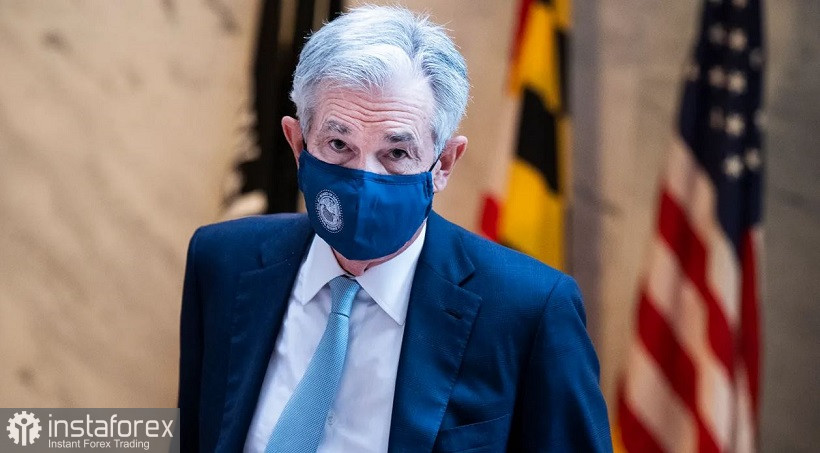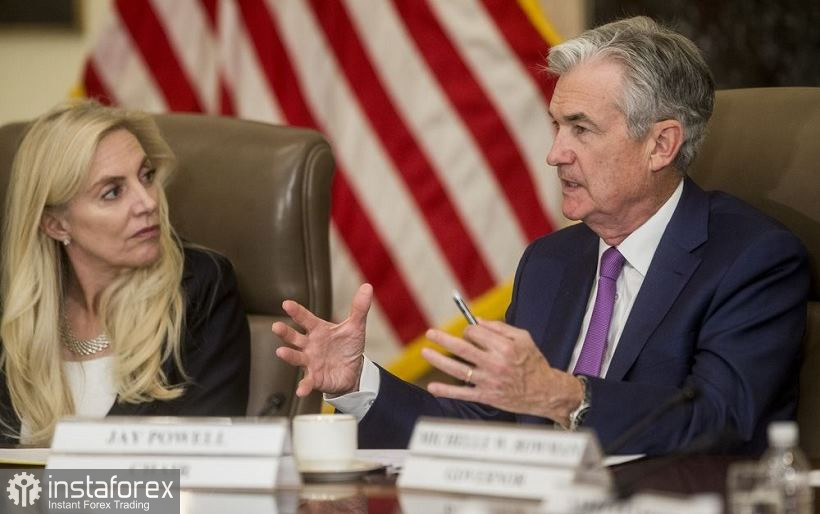The EUR/USD pair left the multi-month price low (1.1513) and drifted in the middle of the area of 1.15. Strong Nonfarm data provoked a downward impulse for the pair but did not help the EUR/USD bears to enter the area of the 14th mark in order to finally change the price range. Therefore, traders had to stay in the same range, between the upper and lower lines of the Bollinger Bands indicator on the D1 timeframe (1.1530-1.1600). However, the tactical retreat of the sellers cannot be regarded as a defeat: in my opinion, the bearish mood still prevails for the EUR/USD pair. All that is needed is an additional informational push for traders to approach the borders of the level of 1.14 again.
It is immediately necessary to note that despite the fact that the central macroeconomic report of the week is a report on US inflation growth (Wednesday, 12:30 Universal time), the attention of many traders and experts is now focused on waiting for another event. It's about who will take the chair of the Fed for the next four years. Powell's four-year term of office will be done in February next year, but the issue of Joe Biden's successor must be decided now so that congressmen will have time to consider this crucial personnel issue and approve (or not approve) the proposed candidacy in the coming months.

It can be recalled that Powell was nominated for the post of Fed Chairman in 2017. It was when US President Donald Trump decided not to extend the powers of head Janet Yellen. And according to the basic scenario, Powell will be reappointed to this position. His main competitor is Lael Brainard, who adheres to more "hawkish" views. The head of the White House is delaying consideration of this issue – it was expected that he would make an appropriate decision at the end of October, but this did not happen. Last week, Biden refused to answer a question from reporters about whether the powers of the head of the Fed will be extended or a new candidate will be proposed to them. The US President said that this issue is still under discussion. And just yesterday, journalists of The Wall Street Journal, citing their sources, reported that Biden held meetings with Powell and Brainard on the same day.
In other words, the intrigue persists here. If the scales still tilt in Brainard's direction, the US dollar will receive significant support, given her hawkish attitude. The option with Powell will most likely be perceived as very restrained. The US President is expected to make a decision this week.
If we talk about macroeconomic reports, then, as mentioned above, all traders' attention will be focused on the inflation release. According to preliminary forecasts, US inflation will show growth again, continuing the trends of recent months. Thus, the overall consumer price index in annual terms should rise to 5.8%. If this indicator really comes out at this level (or higher), then a 30-year record will be updated: the last time the CPI was at such heights was in the spring of 1991. The core consumer price index, excluding food and energy prices, should also show positive dynamics (0.4% mom, 4.3% yoy).
After the results of the last Fed meeting, Jerome Powell hypothetically did not rule out the possibility of an interest rate increase. He stressed that inflation growth is most likely temporary, and therefore, the Fed intends to be patient with the issue of rates. But at the same time, he added that the regulator "is ready to take measures if the price increase requires it." According to several experts, the Central Bank will still have to admit at some point that inflation is not temporary. If inflation releases continue to break records, hawkish expectations will grow rapidly, even despite the "dovish" comments of some Fed representatives. After all, the next inflationary spurt will occur against the background of the growth of the labor market. According to the latest Nonfarm reports, the number of people employed in the non-agricultural sector increased by 531 thousand in October – this is the strongest growth rate since July of this year. The unemployment rate dropped to 4.6% (the best result since April 2020). The growth rates of salaries (0.4% mom and 4.9% yoy) did not disappoint either.
In this case, all the attention is on US inflation. All other macroeconomic reports this week will be secondary.

Comments from the Fed and ECB members may also increase the volatility of the pair. The Fed Chairman is expected to speak today (although the topic of the speech is somewhat far from monetary policy – "Gender and Economics"). Michelle Bowman, Charles Evans, John Williams, and Richard Clarida will also voice their position. Meanwhile, ECB President Christine Lagarde and Fed representative Mary Daly will speak on Tuesday. On Friday, ECB Chief Economist Philip Lane and Fed member John Williams will also make a speech.
We believe that the bearish sentiment will continue to prevail for the pair, especially if the inflation release does not disappoint investors (i.e. it will come out at least at the forecast level, not to mention the "green zone"). The divergence of the rates of the Federal Reserve and the European Central Bank is becoming clearer, and this fact will exert background pressure on the EUR/USD pair. Therefore, it is advisable to use any corrective bursts to open short positions with the main target of 1.1530 – this is the lower line of the Bollinger Bands indicator on the D1 timeframe.
 English
English 
 Русский
Русский Bahasa Indonesia
Bahasa Indonesia Bahasa Malay
Bahasa Malay ไทย
ไทย Español
Español Deutsch
Deutsch Български
Български Français
Français Tiếng Việt
Tiếng Việt 中文
中文 বাংলা
বাংলা हिन्दी
हिन्दी Čeština
Čeština Українська
Українська Română
Română

